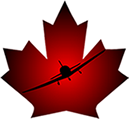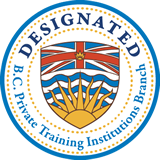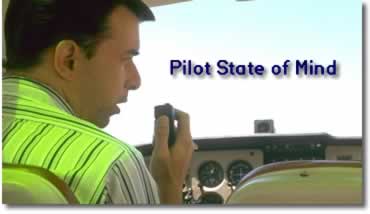 |
|
“Possessing
the proper mental attitude towards piloting an
Just as we us a checklist to prepare an aircraft for flight, we can also use a checklist to assess our own readiness to take on the responsibilities of Pilot in Command. Let’s take a look at some of the behaviours indicative of positive attitude as suggested in the Human Factors for Aviation, Instructor’s Guide. As you go through the list, be honest with yourself; see how you are doing in each area; think about how you might find some room for improvement, however small. In the end, how safe we all are is a direct function of how safe each one of us is. You might want to try out the following rating scale for each item: 4 indicates always; 3 indicates usually; 2 indicates sometimes; and 1 indicates infrequently or never. A pilot with good flying practices demonstrates a positive attitude by: ___ Following SOPs and procedures. This seems simple enough, but it takes a certain amount of discipline. Following SOPs and procedures means simply what it says. We want to get into the habit of doing the right things, from beginning to end: checking weather and NOTAMS, using checklists, performing thorough pre-flight inspections, carefully ensuring the area is clear before starting the engine, carrying out careful lookouts during flight. We want it to be second nature to complete all the hundreds of little details that go into minimizing the risks involved in flight. If you don’t have a set of SOPs for yourself, you might want to take a look at developing some. Talk it over with a professional pilot, if you know one. Your aircraft’s POH, the Flight Training Manual and your AIP are all excellent reference materials. Have a chat with your favourite instructor. Just the process of thinking it all through can lead to a positive change. Setting a good example. This means doing the right thing even when no one is watching. When people are watching, setting a good example becomes very important. Many folks take their clues from what others do. One person consistently doing the right think can encourage many others to follow suit. Dave English, in his little book, Slipping the Surly Bonds, includes the anonymous quote, “Whenever we talk about a pilot who has been killed in a flying accident, we should all keep one thing in mind. …Every instructor, supervisor, and contemporary who ever spoke to him [or her] had an opportunity to influence his [or her] judgement, so a little bit of all of us goes with every pilot we lose.” It is a unique and very important opportunity we have to influence the behaviour of others by always trying to set the best, personal example we can. Setting high standards for self. I have this discussion with myself and my students on a regular basis. Proficient flying skills do not, as it were, drop from the sky. They are built, moment to moment, through being consistent, paying attention and not being willing to accept second best. Setting a high standard of performance for yourself builds towards excellence. If you set out to fly at 2000’, make it 2000’ not 1950’ or 2050’. Make each turn the best you can manage, each take off, each landing. As an old “friend” said to me once, “Aim low, hit low.” The opposite is also true. If we want to achieve a high standard, that’s the standard we want to set for ourselves. Maintaining currency. Maintaining currency is, of course, a legal requirement. More than that, however, it is making a personal decision about maintaining a level of proficiency you need to be both safe and comfortable in an aircraft. We all know that skills decay without use. The key question here is: am I up to my own level as well as the legal minimum? Flying within current proficiency level. This item pretty well speaks for itself. We all need to be clear about what we can and can’t do, our actual experience level, how good we really are. Just because the VFR rules say below 1000’ in daytime, 2 miles flight visibility (aeroplanes) and clear of cloud is sufficient doesn’t mean that’s good enough for a particular pilot on a particular day. This is where our judgement needs to alive and well and tuned in to our own, personal proficiency level. Self-evaluating. I like to think this is something I do regularly and continuously. And, indeed, here we are working through a self-evaluation at this moment. It’s the ongoing process of looking at what we do, evaluating it, determining what could be improved, making a plan to improve it and carrying out the plan. This is how we grow: little by little, but constantly. So, let’s add up our score and see how we are doing. A score of 24 is excellent. You certainly don’t need to show anyone else the results of your self-evaluation, but if you are coming in with a score less than 21 you might want to give some thought to the standards you are setting for yourself. Flying is one of the most exciting and involving activities, but it is a very unforgiving one. To a great extent, the attitude we take with us into the air is a significant factor in determining how safe a pilot we are, how well we are managing the inherent risks involved in flight. Attitudes, of course, are difficult to monitor and evaluate directly, but we can monitor and evaluate our behaviours. If you can truly say, after taking the little inventory above, that your behaviours reflect a positive attitude, good for you! You are doing your part to reduce and manage the risks of flying both for yourself and for all the rest of us. Keep up the good work.
|



